The modern business world relies on effective and efficient management. And one of the most essential tools for this management is the Balanced Scorecard (BSC). The BSC is a strategic management tool that allows companies to track their performance and measure whether they are meeting their goals. That's why we've put together this step-by-step tutorial to help you create a BSC in Excel and do the same using an alternative tool called Boardmix. By the end of this guide, you should have a complete understanding of how a BSC can be created on both platforms and how they compare to each other.
What is a Balanced Scorecard?
A balanced scorecard, also known as a Balanced Scorecard (BSC), is a strategic management system that allows companies to align their business activities with the organization's vision and strategy. This is achieved through a series of key performance indicators (KPIs) divided into four perspectives: financial, customers, internal processes, and learning and growth.
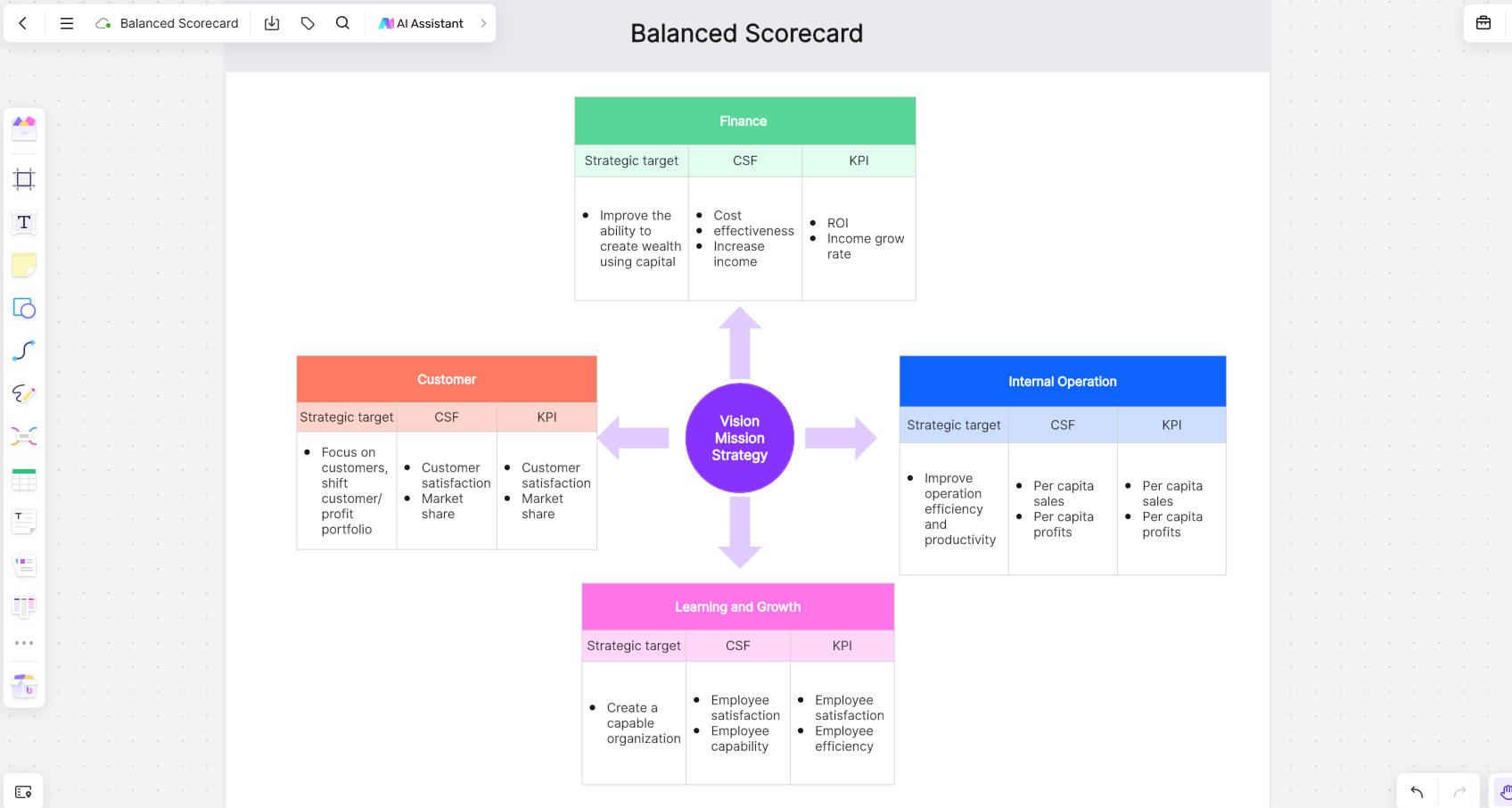
Use this balanced scorecard template
What is the purpose of a Balanced Scorecard?
The purpose of the Balanced Scorecard is to provide a comprehensive framework for organizations to:
1) Align Strategy and Actions: Connect day-to-day activities with the organization’s strategic goals.
2) Improve Decision-Making: Offer a broader view of success beyond financial metrics.
3) Enhance Communication: Ensure all stakeholders understand and contribute to organizational objectives.
4) Monitor Progress: Track performance across critical areas to identify strengths and areas for improvement.
By integrating financial and non-financial metrics, the Balanced Scorecard helps organizations stay agile and focused on achieving sustainable success.
What are the indicators that make up the Balanced Scorecard?
The Balanced Scorecard (BSC) uses four key indicators, also called perspectives, to measure organizational performance beyond financial outcomes:
1) Financial Perspective: Measures financial success, such as revenue growth, profit margins, or return on investment (ROI).
Example: "Increase net profit by 10% annually."
2) Customer Perspective: Focuses on customer satisfaction, retention, and market share.
Example: "Achieve a 95% customer satisfaction rate."
3) Internal Business Processes Perspective: Tracks the efficiency and effectiveness of internal operations.
Example: "Reduce production cycle time by 20%."
4) Learning and Growth Perspective: Measures the organization's ability to innovate and improve.
Example: "Provide training for 100% of employees on new technologies."
These indicators offer a balanced view of performance, aligning daily operations with long-term goals.
How to Create a Balanced Scorecard in Excel?
Now, let's take a look at how we can develop a balanced scorecard using Excel.
Step 1: Open Excel and create a new worksheet
Open Excel and create a new worksheet. This will be the basis for your balanced scorecard.
Step 2: Define your strategic objectives
The first step in creating a balanced scorecard is to define your strategic objectives. These are the outcomes you hope to achieve in the long term.
Step 3: Identify key perspectives
Perspectives are the different areas of your organization that will contribute to achieving your strategic objectives. They are typically divided into four categories: financial, customers, internal processes, and learning and growth.
Step 4: Create key performance indicators (KPIs)
For each perspective, you need to identify the KPIs that will help you measure progress toward your strategic objectives.
Step 5: Create a table for each perspective
In your new worksheet, create a table for each perspective. In each table, you should have a column for the KPI, a column for the goal, and a column for current performance.
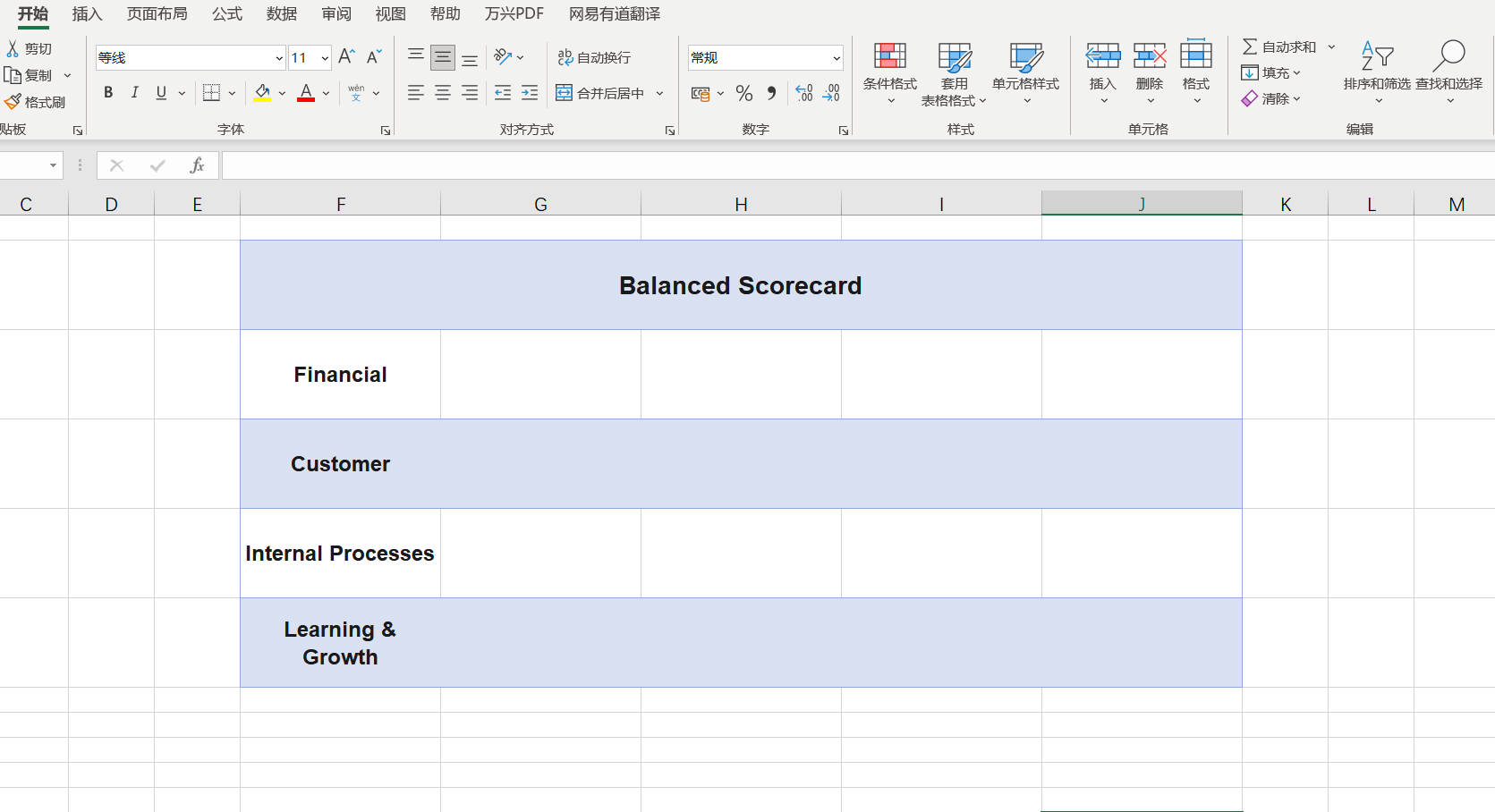
Step 6: Enter your data
Enter the relevant data in each table. This includes the KPIs you've identified, the goals you've set, and current performance.
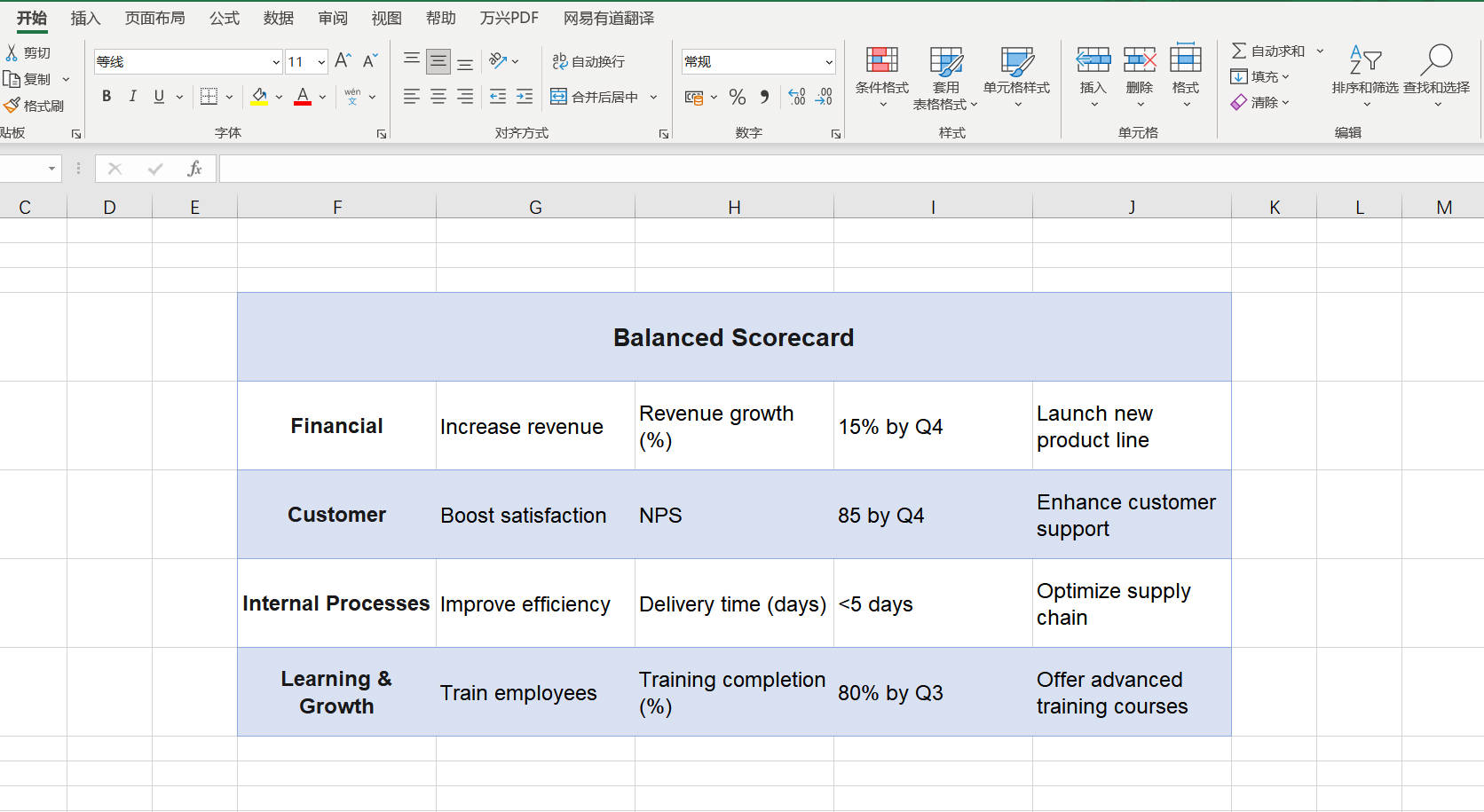
Step 7: Regularly update your scorecard
Finally, make sure you regularly update your scorecard with new data. This way, you'll always have an up-to-date view of your organization's performance.
Using the Balanced Scorecard Template: Creating One in Boardmix
Boardmix is a digital platform that enables businesses to create and share balanced scorecards quickly and efficiently. Just like with Excel, the first step in creating a balanced scorecard in Boardmix is to define the goals and KPIs. However, once this has been done, the process of creating the dashboard is much simpler thanks to the balanced scorecard templates that Boardmix provides.
Steps to create a balanced scorecard using a template in Boardmix
To create a balanced scorecard in Boardmix, simply follow these steps:
Log in to Boardmix and select the "New dashboard" option.
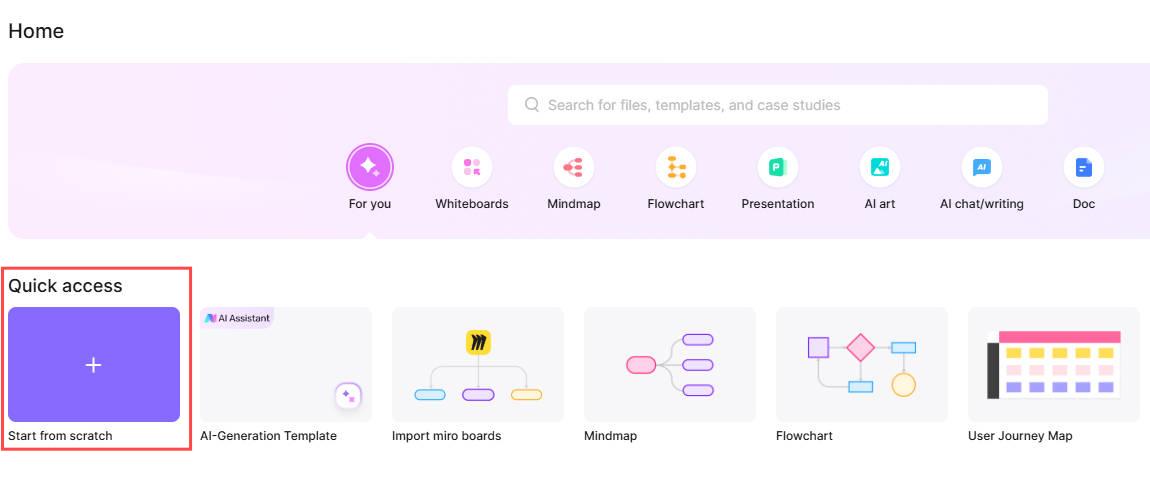
2. Choose one of the pre-designed BSC templates or create a custom one.
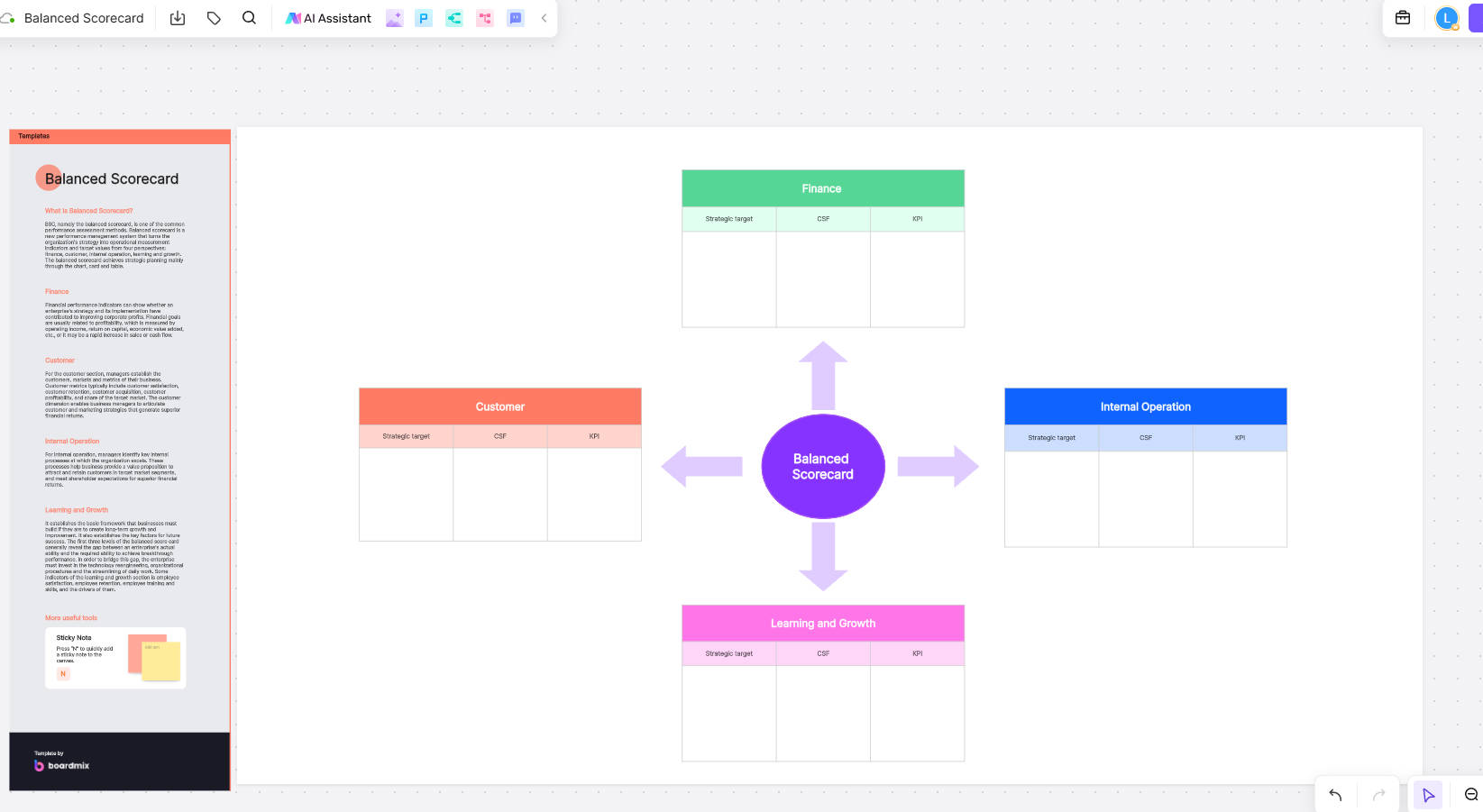
Add the KPIs in the appropriate places in the template.
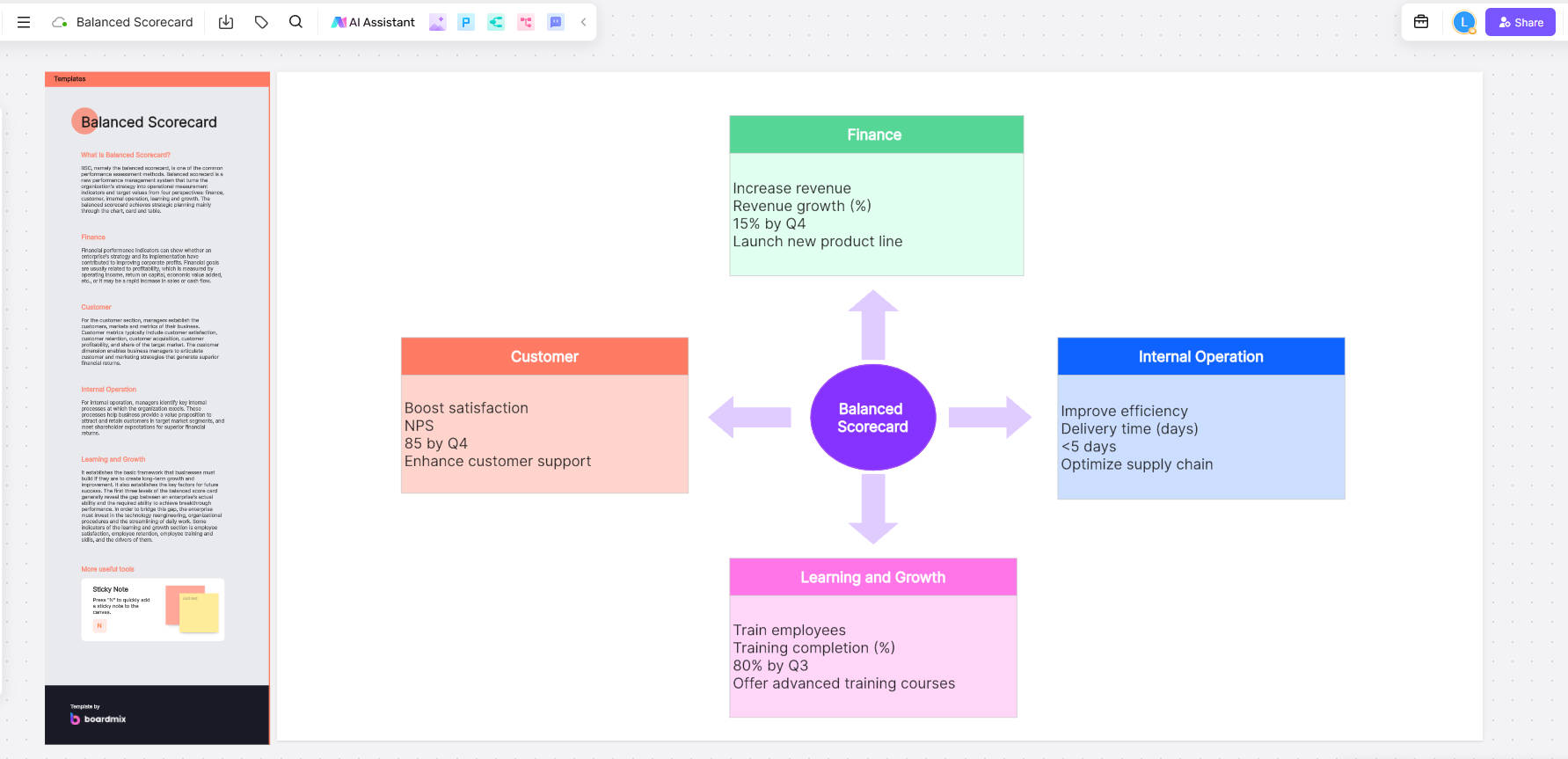
Customize the dashboard by changing the colors, fonts or inserting images or links according to your needs.
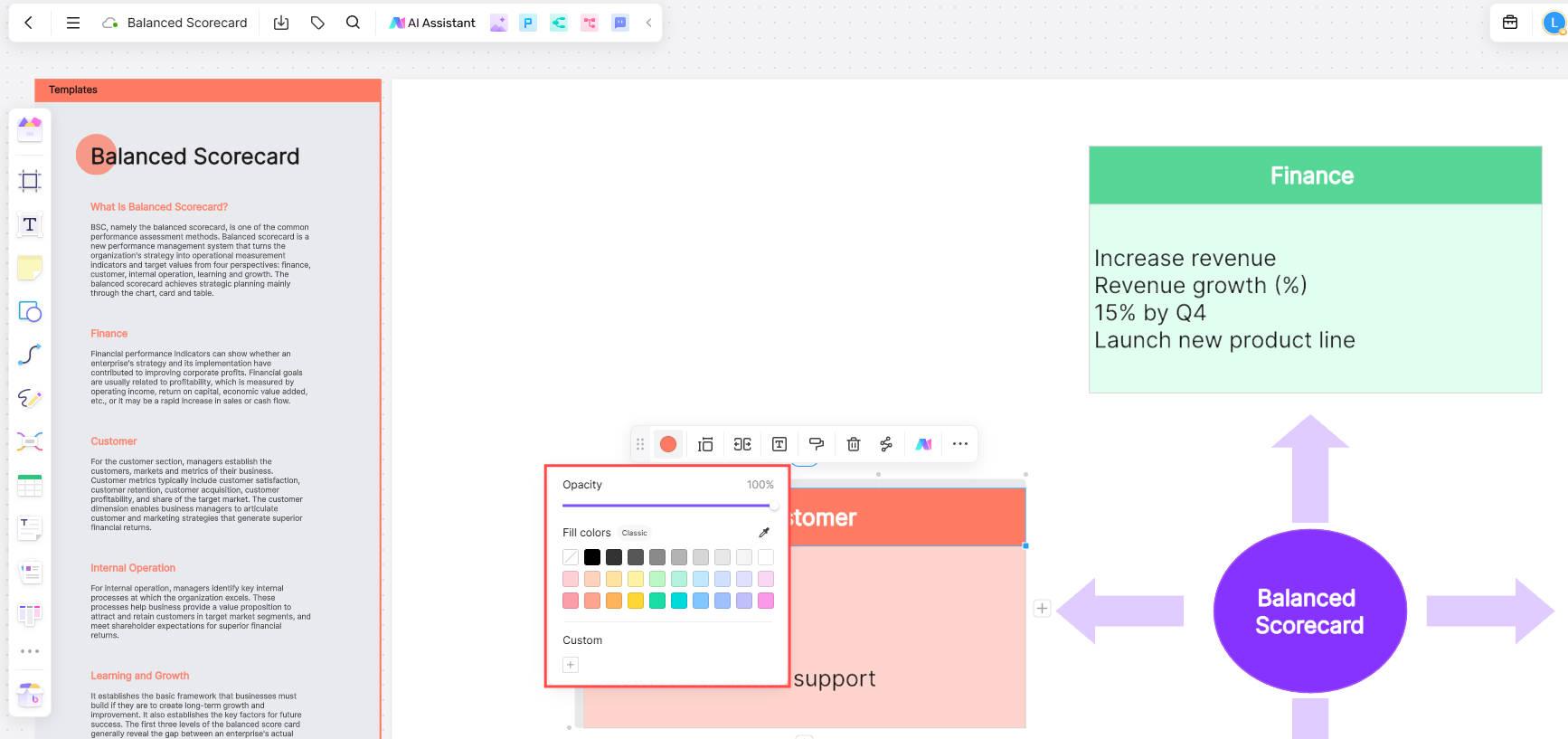
Save and share the dashboard with other team members.
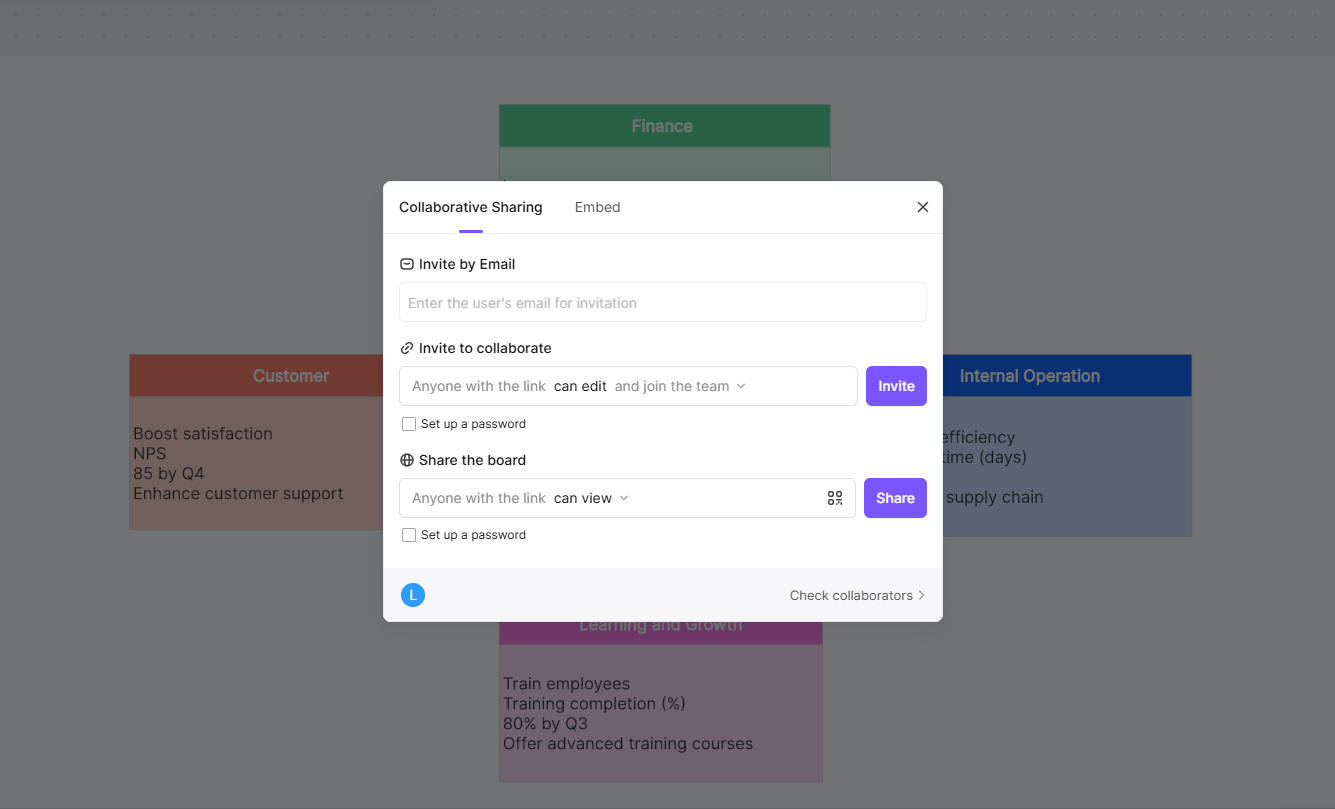
Excel vs. Boardmix Comparison
While both Excel and Boardmix can be used to create a CMI, each has its advantages and disadvantages.
Excel has the advantage of being a commonly used tool, so most people are familiar with how it works. In addition, Excel is very flexible and can be customized to fit the needs of any company. However, creating a CMI in Excel can be a laborious and complicated process if you are not experienced with Excel's advanced features.
On the other hand, Boardmix offers a more streamlined and efficient solution to creating a CMI. Predefined CMI templates make the process quick and easy, even for those who are inexperienced in creating CMIs. Additionally, Boardmix allows you to easily share boards with other team members., which is a big plus for companies that operate remotely or in multiple locations. However, Boardmix may not be as flexible as Excel, and may not be suitable for companies that need a highly customized BSC.
Conclusion
Both Excel and Boardmix are valuable tools for creating a balanced scorecard. The choice between them will depend on your company's specific needs and capabilities. Regardless of which tool you choose, the important thing is that your company is taking a step in the right direction toward more effective and measurable strategic management.









